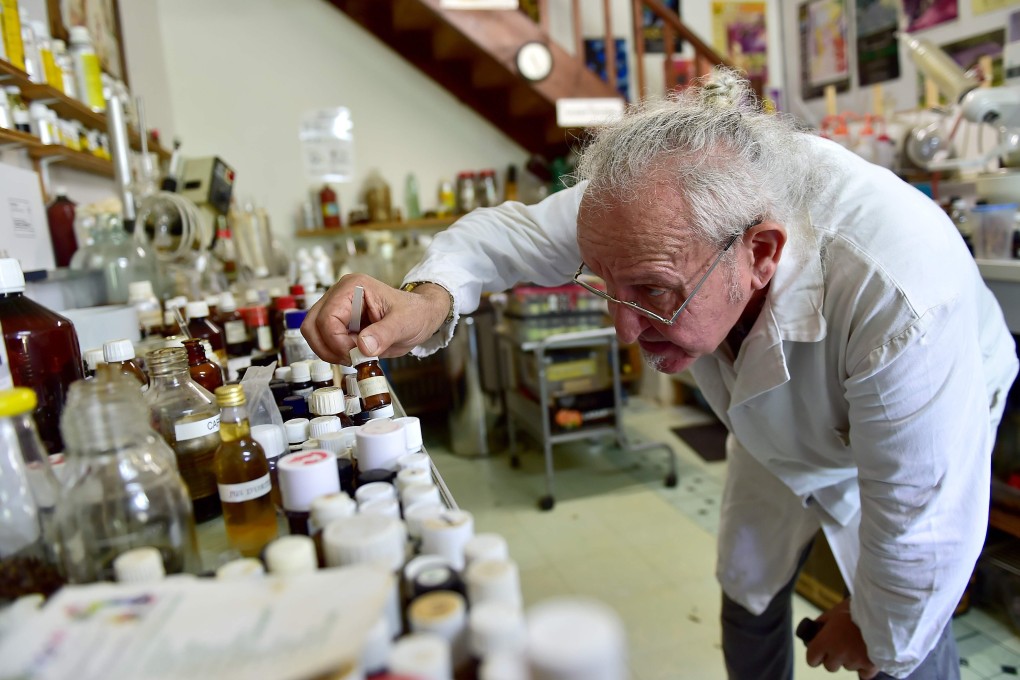Want to smell the moon? French ‘aroma sculptor’ thinks he’s captured elusive scent
- Geneticist Michael Moisseeff based reconstruction on descriptions from astronauts who had walked lunar surface, including Neil Armstrong
- His next project takes him back to the Renaissance as he attempts to reconstruct the scent of the Mona Lisa

He may never have pulled on a spacesuit or flown in a shuttle but that has not stopped Frenchman Michael Moisseeff from reaching for the stars.
After years of exploring and reconstructing the scents of planet Earth, the 66-year-old “aroma sculptor” set himself a new goal – capturing the smell of the moon.
Moisseeff, with his floral shirt and a head of white hair tied up at the back, straddles the line between artist and scientist as he moves purposefully around the thousands of vials that make up his laboratory.
It is here that the trained geneticist fulfils his life’s work of dissecting the mysteries of smell and producing all kinds of scents, fragrances and emanations from molecules.

03:03
The first moon landing: 50 years on
“To recreate the scent of undergrowth, for example, you have to go there first,” he says.